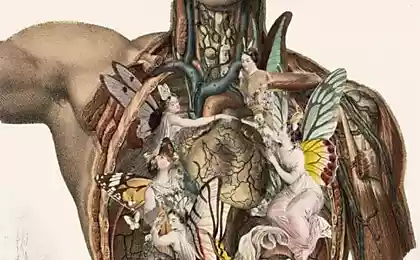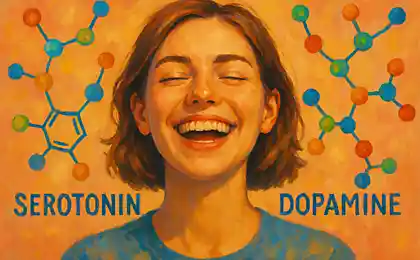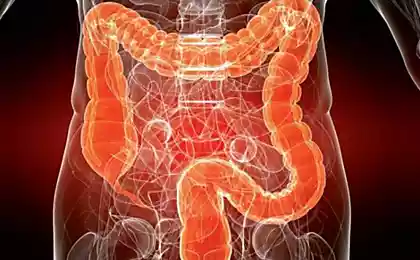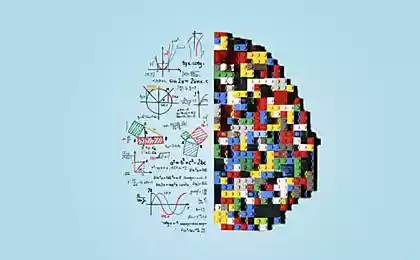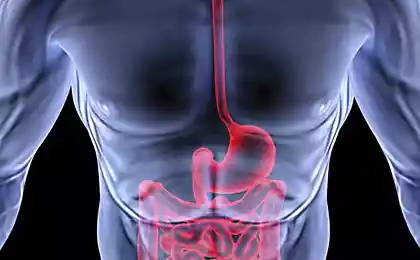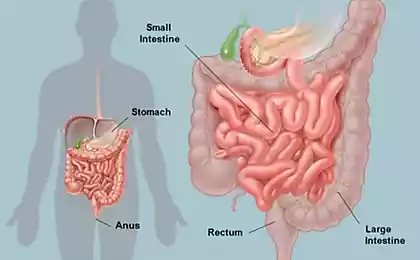499
Two are better than one: the second human brain
Two eyes, two arms, two legs and two brains: one is pulsating in the head, the other is active in the stomach – the way of the man, according to Michael Gershon.
Proof? Please: there are disorders and diseases such as anxiety, depression, ulcers, bowel disorders, Parkinson's disease, which appear in both the first and second brain in the skull, and intestines. The symptoms and disease caused by damage to affect one or another brain, as in the confusing game of mirrors that never cease to mix psychiatric abnormalities and anomalies of the gastrointestinal.

Who is not familiar with the "butterfly effect" in your stomach when you have to take the exam? Or a strange pain in the stomach, as soon as you start to get nervous? In fact, if mysticism (and common opinion) has always emphasized the hard duality "brain – body", Gershon denies all, claiming a strange thing: the brain 1 and brain 2-th are self contained units, but, however, are in constant contact. Two are better than one.
A decade after the appearance of the most popular works of the "Second brain" the latest discoveries of the scientist, set forth on the first page of the New York Times, confirm the hypothesis that the nervous system of the intestine is not stupid cluster nodes and tissues that executes commands of the Central nervous system, according to an old medical tradition and a unique network able to carry out complicated processes on your own (amazing, but the gut continues to function even when there is no communication with the brain and spinal cord).
Thus, the brain number 2 decides independently on all aspects of digestion, throughout the digestive tract, from the esophagus to the intestine and rectum, using the same tools as the "noble" brain: a network of neural circuits, neurotransmitters and proteins. Evolution is evidence of his insight: instead of trying to force the head of the severely strain the activity of millions of nerve cells, with the aim to communicate with a remote site of the body, she chose to use a set of circuits located in controlled areas.
And in the same way as the brain 1, second brain, Gershon says, is the extensive data Bank in which millions of years of experiments has retained many of the behavioral program, is ready to act depending on the needs of the moment, in other words, digestion: is it about the bun, about the full dinner is about unusual food, on a strict diet. Second brain always know how to respond, activating the proper enzymes and nutrients for better feeding of the body.
Secret weapons over work is a well known neurotransmitter — serotonin. Quite unexpectedly, it turned out that almost all of serotonin, 95%, is concentrated in the bowel, which acts with maximum efficiency. The digestive process starts only when special cells (enterochromaffin) suck it into the bowel, which reacts thanks to the seven receptors, and transmits the order to the nerve cells to release the enzymes and make them circulate.
But serotonin is also a messenger that informs the brain about what is happening in the stomach. Another discovery was that 90% of information enters in the same direction. Transmission occurs almost always from the bottom up, and often the messages are bad. So, for example, is a common syndrome of indigestion, which affects one in three people. In this case, as with depression, one of the reasons is the change in the number of neuro-transceiver: excessive instead of insufficient. It is the fault of the molecule, which needs to transport it, "cert": for many people, it is not functioning properly.
Also interesting: 10 ways to keep your brain young and active
How the gut flora controls the behavior of the person
Now, says Gershon, psychiatrists and gastroenterologists open new therapeutic opportunities.published
From the book "the Second brain" by Michael Gersen
Source: vk.com/wall-23903469?w=wall-23903469_10400%2Fall
Proof? Please: there are disorders and diseases such as anxiety, depression, ulcers, bowel disorders, Parkinson's disease, which appear in both the first and second brain in the skull, and intestines. The symptoms and disease caused by damage to affect one or another brain, as in the confusing game of mirrors that never cease to mix psychiatric abnormalities and anomalies of the gastrointestinal.

Who is not familiar with the "butterfly effect" in your stomach when you have to take the exam? Or a strange pain in the stomach, as soon as you start to get nervous? In fact, if mysticism (and common opinion) has always emphasized the hard duality "brain – body", Gershon denies all, claiming a strange thing: the brain 1 and brain 2-th are self contained units, but, however, are in constant contact. Two are better than one.
A decade after the appearance of the most popular works of the "Second brain" the latest discoveries of the scientist, set forth on the first page of the New York Times, confirm the hypothesis that the nervous system of the intestine is not stupid cluster nodes and tissues that executes commands of the Central nervous system, according to an old medical tradition and a unique network able to carry out complicated processes on your own (amazing, but the gut continues to function even when there is no communication with the brain and spinal cord).
Thus, the brain number 2 decides independently on all aspects of digestion, throughout the digestive tract, from the esophagus to the intestine and rectum, using the same tools as the "noble" brain: a network of neural circuits, neurotransmitters and proteins. Evolution is evidence of his insight: instead of trying to force the head of the severely strain the activity of millions of nerve cells, with the aim to communicate with a remote site of the body, she chose to use a set of circuits located in controlled areas.
And in the same way as the brain 1, second brain, Gershon says, is the extensive data Bank in which millions of years of experiments has retained many of the behavioral program, is ready to act depending on the needs of the moment, in other words, digestion: is it about the bun, about the full dinner is about unusual food, on a strict diet. Second brain always know how to respond, activating the proper enzymes and nutrients for better feeding of the body.
Secret weapons over work is a well known neurotransmitter — serotonin. Quite unexpectedly, it turned out that almost all of serotonin, 95%, is concentrated in the bowel, which acts with maximum efficiency. The digestive process starts only when special cells (enterochromaffin) suck it into the bowel, which reacts thanks to the seven receptors, and transmits the order to the nerve cells to release the enzymes and make them circulate.
But serotonin is also a messenger that informs the brain about what is happening in the stomach. Another discovery was that 90% of information enters in the same direction. Transmission occurs almost always from the bottom up, and often the messages are bad. So, for example, is a common syndrome of indigestion, which affects one in three people. In this case, as with depression, one of the reasons is the change in the number of neuro-transceiver: excessive instead of insufficient. It is the fault of the molecule, which needs to transport it, "cert": for many people, it is not functioning properly.
Also interesting: 10 ways to keep your brain young and active
How the gut flora controls the behavior of the person
Now, says Gershon, psychiatrists and gastroenterologists open new therapeutic opportunities.published
From the book "the Second brain" by Michael Gersen
Source: vk.com/wall-23903469?w=wall-23903469_10400%2Fall
Nassim Taleb: the higher you get the worse the fall
Electric vehicles-the drones have adapted to taxis in Singapore



